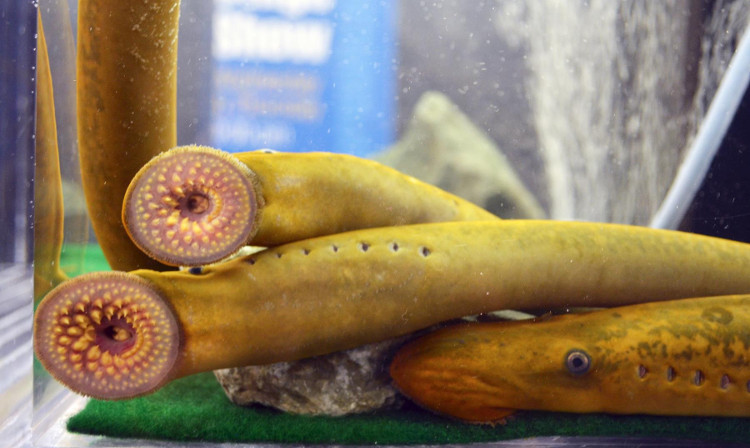The 'vampire' changed sex according to the living environment
Depending on the environment, the blood-sucking mudfish larvae can turn into males or females to adapt to food sources.
Rocky grouper can change sex according to habitat characteristics, according to a new study published March 29 in the Royal Society B, Proceedings magazine.
Stone grouper (Petromyzon marinus) is very popular in the Five Lakes region of North America. Although considered an endangered species in Europe and the Pacific Northwest, this fish spread fear on American lakes and rivers, threatening local fish populations and the fish industry.
The eel-like parasite fish thrives based on sucking blood from aquatic organisms. With sharp teeth like knives, they cling and drain the blood of animals living in the water.

Sardines specialize in sucking blood with a sharp toothed mouth.(Photo: Flickr).
The research team from the US Geological Survey (USGS) and the University of Michigan decided to study the effects of environmental conditions on the reproduction rate of rocky grouper. They found that this "vampire" fish could become male or female depending on the level of development in the larval stage.
This unique method of sex determination was first recorded in nature, turning rocky grouper into the first sex-changing organism based on environmental resources. In mammals, sex is established at the chromosome level, while the sex of the reptile is dominated by the temperature of the egg.
Stone grouper larvae initially had the same genitalia, developed gonads within a year and changed to mature fish shape after a few years.
The research team was led by Nick Johnson, USGS biologist, to study the habitat of rocky grouper in the Five Lakes area, including tributaries and adjacent reservoirs. They released about 1,500-3,000 rocky larvae to monitor their development after certainly no wild rockers in the study area.
All larvae are marked earlier, allowing the team to easily catch it after they change shape to observe the sex. The experiment showed environments with poor food sources that resulted in a slower growth rate in rocky larvae, increasing their ability to transform into males.
Enviroments with an abundance of prey resulted in 78% of male male grouper populations, while high feed environments produced only 56% of males."We are very surprised to find out how this data reveals how the sex of the grouper is decided , " Johnson said.
According to Johnson, the sex grouper's sex system lies in the density of larvae as well as the abundance of food because the nutrient-rich environment provides better conditions for the fish to spawn.
- Turn 'vampire' bacteria into living antibiotic
- The truth about the origin of vampires
- The reaction of the body in a weightless environment suggests that living on Mars is still far away!
- The legendary 'vampire' and the truth you certainly don't know
- Decode the grave 'vampire' in Poland
- The first film about species destined to be a vampire squirrel
- Serbian town rioting because of vampire warnings
- Vampire remains revealed in Poland
- The truth about the 'vampire' remains was grave 200 years ago
- Discovered a 500-year-old vampire skeleton in Poland
- Vampires - from myth to science
- Vampires in the animal world
 Animal 'suffering' after hibernation
Animal 'suffering' after hibernation Why do goats climb well?
Why do goats climb well? Scientists were surprised to see chimpanzees eating turtles
Scientists were surprised to see chimpanzees eating turtles Giant catfish died deadly due to drought in Thailand
Giant catfish died deadly due to drought in Thailand